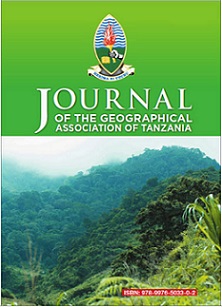Livelihood Continuity and Change: Adaptation to Climate and Environmental Change in Northern Unguja, Zanzibar 1916-2016
Abstract
Coastal community continuity and change in livelihoods become a prime adaptationstrategy worldwide because of climate and environmental change. The changes in
climate and environment along the coast have been associated with natural and
human induced factors. This paper analysed the livelihood continuity and change as
adaptation measures in northern Unguja, in relation to temperature and rainfall
change. Archival and current reviews, interview and observation which represent the
livelihoods change over last 100years were used. The paper also, analyzed how local
community processes of continuity and change have interconnected with local climate
events and changes over last 100 years. The results reveal that there were societal
change both North Western Zone and North Eastern Zone in livelihoods activities as an
adaptation mechanism due to gradual environmental changes, such as coastal erosion,
coastal floods, unreliable rainfall and droughts. Such scenario increases the risk and
vulnerability to the local community. The study also reveals that the identification of
risks and vulnerability depends on the local community perceptions of what functions
the coastal and terrestrial land should provide, as they informed by past experience,
histories and current situation. Therefore, the successful adaptation from the local
perspective should go beyond protecting what is already there and allow for future
development of the village.
Keywords: Livelihood, Climate change, Coastal Change, Adaptation
Downloads
Published
2016-02-12
Issue
Section
Articles


